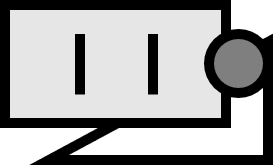Definitions of Points, Lines, and Planes in Euclidean Geometry
Definitions 1 2
- An object that has no parts is called a point.
- An object that has no breadth and only length is called a line. A line that lies evenly with the points on it is called a straight line.
- An object that has length and breadth is called a surface. A surface that lies evenly with the lines on it is called a plane surface.
Explanation
Surprisingly, the definitions of point, straight line, and plane in synthetic geometry are not very rigorous from a modern perspective. The above definitions are taken from the Euclidean axiom system, and before defining the three figures, what is meant by “part”, “breadth”, or “length” is not specified. Surprisingly, this is not simply because Euclid was an ancient author: both the more modern Hilbert axioms and the Birkhoff axioms also accept these concepts without definition, and so this post will follow Euclid’s style.
Normally, definitions are of paramount importance in mathematics, but the reason for omitting them here is probably that such scrutiny would be of little consequence. For example, if analytic-geometric language is allowed, a point can be simply defined as an element of Euclidean space $\mathbb{R}^{n}$, and lines and planes can be defined, respectively, as the sets of points satisfying their equations. However, such an explanation requires a long build-up beginning with set theory, and is not appropriate for the simple figures treated at the start of synthetic geometry.
Byer, O., Lazebnik, F., & Smeltzer, D. L. (2010). Methods for Euclidean geometry (Vol. 37). American Mathematical Soc. p10. ↩︎
Fitzpatrick, R. (2008). Euclid’s elements of geometry. https://farside.ph.utexas.edu/Books/Euclid/Elements.pdf p6. ↩︎
